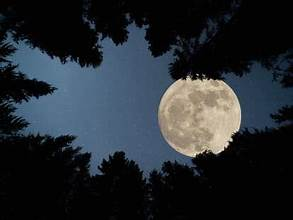
Table of Contents
Monday’s Rare Super Blue Moon: A Confounding Statistical Marvel
On Monday, the skies will offer a celestial spectacle that’s anything but ordinary: a rare super blue moon. This astronomical event is not just a treat for skywatchers but also a fascinating case study in the rare convergence of cosmic timing and statistical rarity. To understand why this phenomenon is so remarkable, it’s essential to explore the components of a super blue moon, the statistical improbability of its occurrence, and its significance.
What is a Super Blue Moon?
A super blue moon is a unique astronomical event that combines two rare lunar occurrences:
- Supermoon: This term refers to a full moon that coincides with the moon’s perigee, the point in its orbit when it is closest to Earth. As a result, the moon appears larger and brighter than usual. Supermoons occur several times a year, but their visibility and impact vary depending on how close the moon is to Earth during each event.
- Blue Moon: A blue moon is defined as the second full moon that occurs within a single calendar month. This phenomenon is rare due to the lunar cycle’s length—approximately 29.5 days—making it uncommon for two full moons to fit within a single month.
When these two phenomena align, the result is a super blue moon. The term “blue” does not refer to the color of the moon but to its rarity; however, in this case, the moon will likely appear with a heightened luminosity due to its proximity to Earth.
Statistical Rarity of the Super Blue Moon
To grasp the rarity of Monday’s super blue moon, let’s delve into the statistical probabilities involved:
- Frequency of Supermoons: Supermoons occur approximately three to four times a year. The exact number can vary depending on the specific criteria used to define a supermoon, such as its apparent size or brightness relative to a standard full moon.
- Frequency of Blue Moons: A blue moon happens about once every 2 to 3 years. This frequency is based on the fact that a lunar cycle does not perfectly fit into the calendar month, making it relatively rare for two full moons to fall within the same month.marvel
- Combining the Phenomena: The simultaneous occurrence of a supermoon and a blue moon within the same month is exceptionally rare. The alignment requires not only that there be two full moons in a month but also that one of these moons must be at its perigee. Given the average timing of blue moons and the orbit of the moon, the chance of these events aligning perfectly in a single month is minimal.
In statistical terms, the occurrence of a super blue moon is a convergence of low-probability events. To illustrate, if the probability of a supermoon happening in any given month is 0.5 (a rough estimate), and a blue moon occurring in a month is approximately 0.33, then the probability of both events happening simultaneously in the same month is around 0.5 * 0.33 = 0.165, or about 16.5%. However, this simplification doesn’t account for the complexities of lunar cycles and calendar months, making the actual probability even lower.marvel
Historical Context and Significance
The rarity of a super blue moon is not merely a matter of statistical interest; it also holds historical and cultural significance:
- Historical Records: Historically, blue moons have been noted for their rarity, often capturing public and astronomical interest. The last occurrence of a super blue moon was in January 2018, making it a notable event for both enthusiasts and scientists. The recurrence of such events is infrequent enough to be considered a significant occasion whenever it happens.marvel
- Cultural Impact: Super blue moons often capture the imagination of the public, sparking interest in astronomy and space sciences. The combination of a visually striking supermoon and the rarity of a blue moon creates a potent mix that encourages people to engage with and appreciate celestial events.
- Scientific Observations: For astronomers and scientists, such events offer opportunities to study the moon’s properties and behavior under unique conditions. Observations during a super blue moon can provide data on the moon’s luminosity, size perception, and its interaction with Earth’s atmosphere.
Visual and Practical Observations
On Monday, observers will experience a moon that appears larger and brighter than usual due to its proximity to Earth. Here are some practical tips for making the most of the event:
- Best Viewing Times: The super blue moon will be visible throughout the night, with its brightness peaking at moonrise and moonset. To get the best view, find a location with minimal light pollution and a clear view of the horizon.
- Photography Tips: To capture the moon’s grandeur, use a camera with a telephoto lens to get detailed shots. A tripod is essential to avoid blurriness caused by hand movements. Experiment with different exposure settings to highlight the moon’s features.marvel
- Educational Opportunities: This event provides a perfect opportunity for educational outreach. Schools and community organizations can use the occasion to engage students and the public in discussions about lunar science, celestial mechanics, and the importance of observing and understanding our natural world.
Conclusion
Monday’s super blue moon is a rare and statistically intriguing event that combines the distinct phenomena of a supermoon and a blue moon. The improbability of such an alignment highlights the unique nature of this celestial occurrence. As observers prepare to witness this extraordinary event, it serves as a reminder of the wonder and complexity of the universe. Whether viewed through telescopes or enjoyed with the naked eye, the super blue moon offers a moment to marvel at the intricate dance of astronomical events and their impact on our perception of the cosmos.marvel







